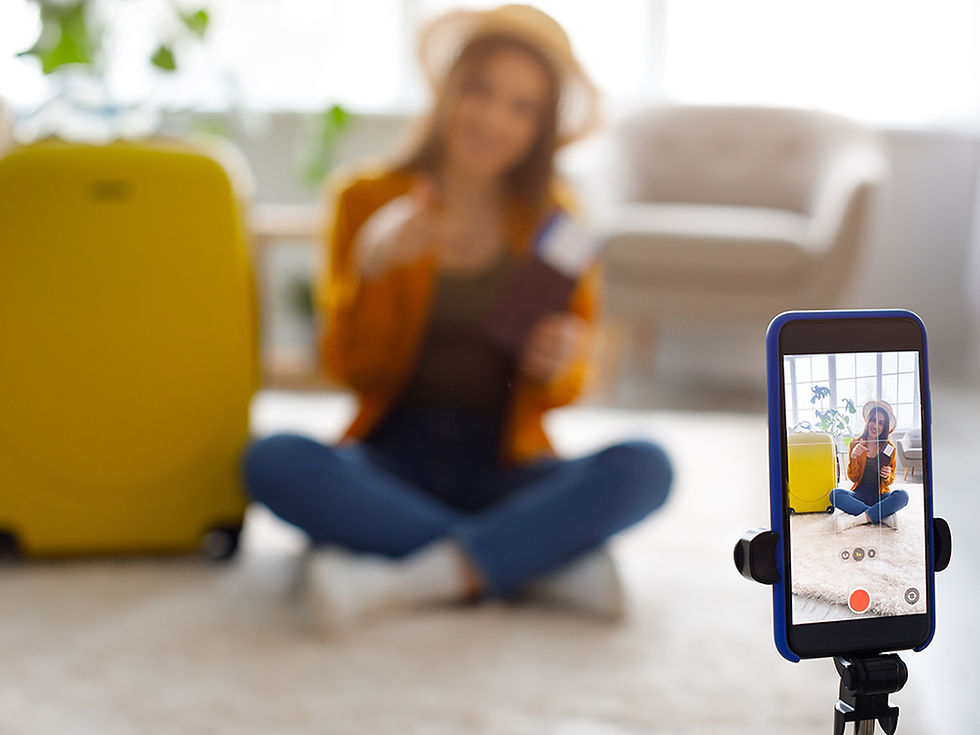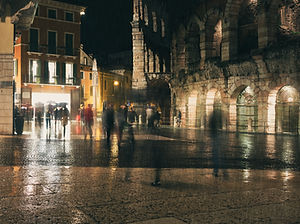Perspectives
%20in%20Split%2C%20Croatia_%20Diocletian's%20Palace%20is%20an%20ancient%20Roman.jpeg)
Image: Adobe Stock/Prostock Studio.
Do ‘travel influencers’ help or harm?
By Tiffany West
Briefly …
Travel influencers shape how we see the world, but is their impact a force for good, or a danger to authentic travel and destination safety and infrastructure?
Travel influencers have transformed how we see the World. Once upon a time, travel agents, magazines, brochures, and guidebooks exclusively held the keys to travel inspiration. Now, a scroll through countless social media feeds can also instantly introduce us to a hidden cove in Portugal, a noodle stall in Hanoi, or a trek through Patagonia, all captured and shared enthusiastically by people who are actually ‘there’ and occasionally having the kind of experiences we dream of having. Their stories make faraway places feel accessible, their practical tips demystify journeys, and for many solo travellers, their presence offers guidance and a sense of solidarity.
At their best, influencers democratise travel. They share not just polished photographs but also the realness of getting lost, missing connections, or stumbling through a new language. That mix of honesty and aspiration can empower first-time solo adventurers to take the leap. Influencers can also shine a light on overlooked destinations and smaller businesses, giving a platform to family-run guesthouses, conservation projects, or communities seeking sustainable forms of tourism. In this way, their reach can redistribute attention, drawing travellers away from crowded hot spots and toward places that benefit from being seen.
But the coin flips quickly. The curated lens of influencer culture often prioritises image over experience, reducing complex destinations to a backdrop. Villages, markets, and even sacred sites can become little more than props in the endless pursuit of content. A single viral post can turn a quiet corner of the world into an overrun attraction, straining fragile ecosystems and local ways of life. In chasing the perfect shot, travellers can trespass, disrupt, or leave behind a footprint that lingers long after the image is posted.
In May, Travel and Tour World reported that The Balearic Islands had been under pressure due to ‘selfie tourism’ pushed by influencers and heavy geotagging. Issues included environmental degradation (such as erosion, waste, and stress on wildlife), and social unrest as locals complained of loss of community character, and overcrowding.
One of the most alarming examples was Caló des Moro, a small cove nestled along Mallorca’s rugged coastline. Designed to accommodate around one hundred visitors at a time, this idyllic spot was relatively undiscovered until a prominent influencer posted images and videos showcasing its turquoise waters and dramatic cliffs.
The aftermath was devastating. Within weeks, daily visitors surged to approximately four thousand people, with about twelve hundred vehicles descending on the area every day, according to statements by the local mayor. The sheer volume of tourists led to erosion of pathways, damage to native vegetation, and strain on waste management facilities. Additionally, safety concerns arose as overcrowding made emergency access difficult. Recognising the severity of the situation, authorities took the rare step of removing all images of the cove from official websites and publications to help reduce visitor numbers.
“The sheer volume of tourists led to erosion of pathways, damage to native vegetation, and strain on waste management facilities. Additionally, safety concerns arose as overcrowding made emergency access difficult.”
In January, TikTok influencer Rita De Crescenzo posted a live video and several photos to her 1.7 million followers from Roccaraso (a ski resort in Abruzzo, Italy), which triggered enormous interest, reported The Guardian. Within a day, more than 10,000 people, many via organised cheap bus tours, showed up. Roads were clogged, trash piled up, and the resort infrastructure struggled to cope. Francesco Di Donato, the Mayor of Roccaraso, responded by limiting tourist buses and requiring advance reservations for bus companies.
Image: Adobe Stock/InfiniteFlow.
There’s also the question of authenticity. Many influencers now operate within a commercial framework, their posts shaped by sponsorships or paid trips. The line between a genuine recommendation and an advertisement can blur, leaving followers unsure what to trust, and at worst, falsely lured into an experience and/or an evironment that, in reality, may not be anything like the video suggested it would be.
Behind the seamless sunsets and carefree adventures lies a real risk of distortion, through which travel is presented as a flawless performance rather than a messy, unpredictable human experience. For those setting out on their own journeys, the gap between expectation and reality can feel wide, disheartening, and dishonest.
Are travel influencers, then, neither wholly saviours nor villains? While they are certainly handsomely remunerated storytellers with unprecedented reach, it is also important to remember that they broadcast with an agenda, which may also distort more independent and authentic points of view. For solo travellers especially, the challenge is to take inspiration without imitation – to let their posts spark curiosity while remembering that the true essence of travel lies not in how a moment looks, but in how it feels when you are there, discovering the world for yourself.
Tiffany West is The Solo Traveller’s Editorial and Pictorial Assistant Lead.
You might also enjoy …

Confidence and Safety

Inspirations

Perspectives


